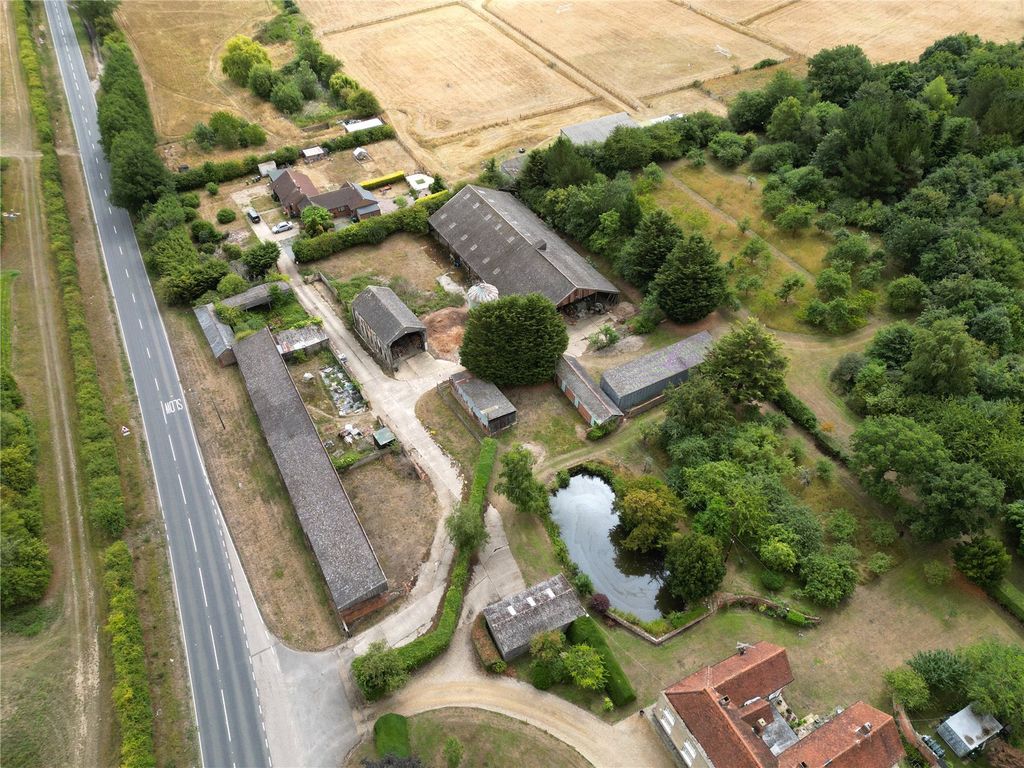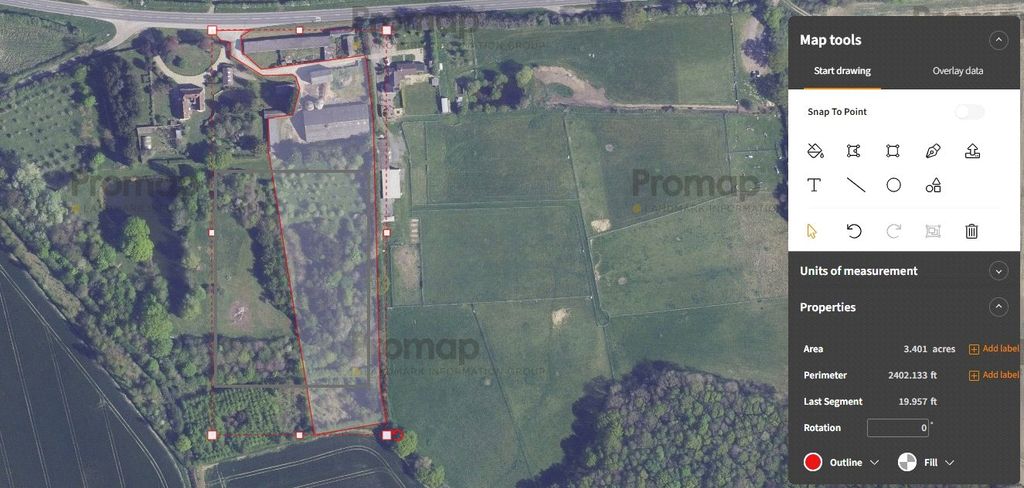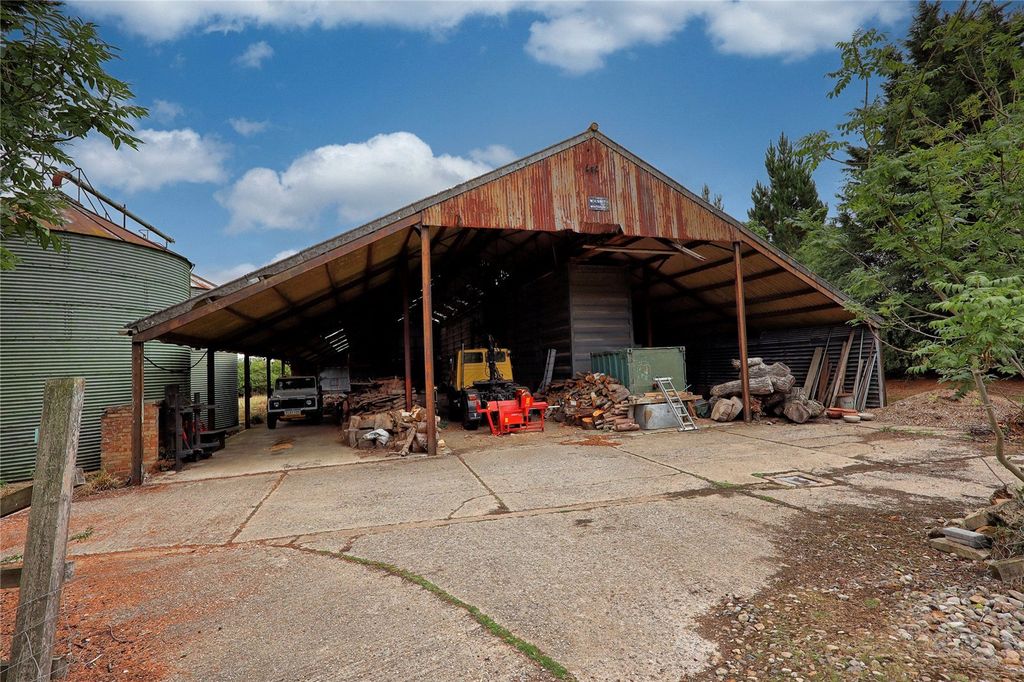£500,000
Land for saleParley Beams Farm, Stonehill, Earls Colne, Essex CO6
EPC Rating: E
Freehold
About this property
There are various out buildings and barns offering superb development potential for conversion to residential STPP.
These are for sale in 2 Lots:
Details here of Lot 2.
Lot 2 - The Main Barn/s and land (edged red on the attached plan)
Approached via a seperate entrance from the road.
The main barn/s and land sts are For Sale at £500k with a view to a prospective purchaser applying for planning consent for residential under class Q for a lovely single dwelling with land and outbuildings.
A large steel framed barn for conversion to residential STPP being granted. Together with various other useful buildings:
See photographs attached.
Viewing is strictly via appointment with the vendors agents.
Class Q Permitted Development allows the conversion of existing agricultural buildings into dwellinghouses, providing a pathway for rural housing development without needing full planning permission. It was introduced in 2014 to ease pressure on housing in rural areas, including green belts. Class Q is a permitted development right, meaning it allows for certain changes to buildings without requiring explicit planning permission, according to a trpc webinar. However, it still requires a prior approval process, which is different from a full planning application.
Key aspects of Class Q Permitted Development:
1. Purpose:
To enable the conversion of existing agricultural buildings into dwellings, contributing to rural housing supply.
2. Scope:
Allows for the change of use of agricultural buildings to dwellinghouses (Class C3) and any necessary associated works.
3. Prior Approval:
Requires a prior approval process, which considers factors like impact on highways, noise, contamination, flood risk, and the design of the proposed dwelling.
4. Limitations:
There are limitations on the number of dwellings that can be created, the size of each dwelling, and the types of modifications allowed.
5. Green Belt:
Class Q can be used in green belt areas, offering a potentially simpler route for development than full planning permission for a new build.
6. Changes in 2024:
There were significant changes to Class Q regulations in 2024, impacting the number of dwellings allowed, the size of the dwellings, and the extent of permissible extensions. For example, the number of dwellings allowed increased from five to ten, and the amount of floor space that can be converted also increased.
Benefits of using Class Q:
1. Simpler Route:
Can be a more straightforward process than obtaining full planning permission for a new build.
For more information or an appointment to view please call or email:
These are for sale in 2 Lots:
Details here of Lot 2.
Lot 2 - The Main Barn/s and land (edged red on the attached plan)
Approached via a seperate entrance from the road.
The main barn/s and land sts are For Sale at £500k with a view to a prospective purchaser applying for planning consent for residential under class Q for a lovely single dwelling with land and outbuildings.
A large steel framed barn for conversion to residential STPP being granted. Together with various other useful buildings:
See photographs attached.
Viewing is strictly via appointment with the vendors agents.
Class Q Permitted Development allows the conversion of existing agricultural buildings into dwellinghouses, providing a pathway for rural housing development without needing full planning permission. It was introduced in 2014 to ease pressure on housing in rural areas, including green belts. Class Q is a permitted development right, meaning it allows for certain changes to buildings without requiring explicit planning permission, according to a trpc webinar. However, it still requires a prior approval process, which is different from a full planning application.
Key aspects of Class Q Permitted Development:
1. Purpose:
To enable the conversion of existing agricultural buildings into dwellings, contributing to rural housing supply.
2. Scope:
Allows for the change of use of agricultural buildings to dwellinghouses (Class C3) and any necessary associated works.
3. Prior Approval:
Requires a prior approval process, which considers factors like impact on highways, noise, contamination, flood risk, and the design of the proposed dwelling.
4. Limitations:
There are limitations on the number of dwellings that can be created, the size of each dwelling, and the types of modifications allowed.
5. Green Belt:
Class Q can be used in green belt areas, offering a potentially simpler route for development than full planning permission for a new build.
6. Changes in 2024:
There were significant changes to Class Q regulations in 2024, impacting the number of dwellings allowed, the size of the dwellings, and the extent of permissible extensions. For example, the number of dwellings allowed increased from five to ten, and the amount of floor space that can be converted also increased.
Benefits of using Class Q:
1. Simpler Route:
Can be a more straightforward process than obtaining full planning permission for a new build.
For more information or an appointment to view please call or email:



.png)